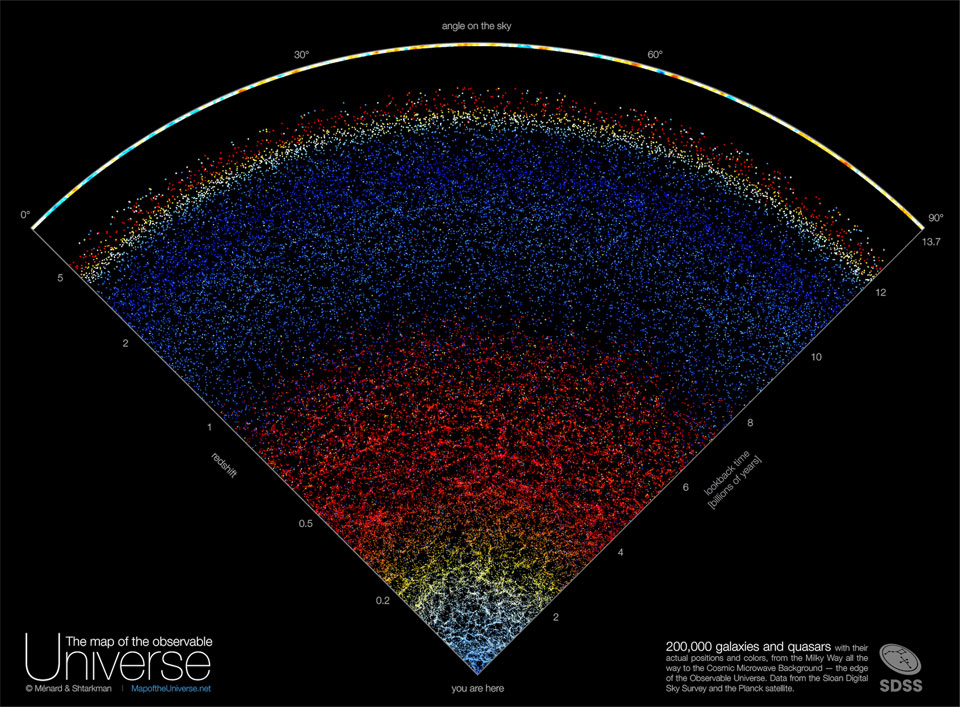안녕하세요 오늘은 NASA에서 어떤 우주의 모습을 비춰줄까요?
먼저 사진부터 감상하시죠!

이 사진의 제목은 A Map of the Observable Universe 입니다. NASA에서 공식적으로 제공한 설명을 보시죠.
What if you could see out to the edge of the observable universe? You would see galaxies, galaxies, galaxies, and then, well, quasars, which are the bright centers of distant galaxies. To expand understanding of the very largest scales that humanity can see, a map of the galaxies and quasars found by the Sloan Digital Sky Survey from 2000 to 2020 -- out to near the edge of the observable universe -- has been composed. Featured here, one wedge from this survey encompasses about 200,000 galaxies and quasars out beyond a look-back time of 12 billion years and cosmological redshift 5. Almost every dot in the nearby lower part of the illustration represents a galaxy, with redness indicating increasing redshift and distance. Similarly, almost every dot on the upper part represents a distant quasar, with blue-shaded dots being closer than red. Clearly shown among many discoveries, gravity between galaxies has caused the nearby universe to condense and become increasingly more filamentary than the distant universe. More Detailed Maps: Related to Today's APOD
오늘도 광활한 우주 앞에 인간이 얼마나 작은 존재인지 깨닫게 되네요.
저는 내일도 더 좋은 사진과 함께 돌아오겠습니다, 행복한 지구여행 되세요!
'생활정보' 카테고리의 다른 글
| NASA 오늘의 사진 (2023-07-07) (0) | 2023.07.07 |
|---|---|
| NASA 오늘의 사진 (2023-07-06) (0) | 2023.07.06 |
| NASA 오늘의 사진 (2023-07-04) (0) | 2023.07.04 |
| NASA 오늘의 사진 (2023-07-03) (0) | 2023.07.03 |
| NASA 오늘의 사진 (2023-07-02) (0) | 2023.07.02 |



